Pashmina, a word that evokes a sense of luxury, elegance, and unparalleled softness, is a textile treasure that finds its roots in the rugged and majestic Himalayan region. Infact, the name itself resonates with opulence and holds a special place in the world of fashion and textiles. In this blog, we hence, delve into the world of Pashmina, unraveling its glorious past, tracing its origin to the Himalayas, and celebrating the sheer beauty it brings to our lives.
In Europe, Pashmina shawls captured the hearts of European royals and nobility in the 18th and 19th centuries. French empresses and aristocrats, such as Empress Joséphine, were notable patrons of this art, adding to its international acclaim. Today, Pashmina's fame endures, and it has found its place in international museums and collections. Museums around the world showcase these shawls as exquisite examples of craftsmanship and artistry. These museums additionally highlight Pashmina's cultural significance and its enduring legacy as a symbol of luxury, elegance, and quality that has transcended time and borders.
The Meaning of Pashmina
The term "Pashmina" finds its origins in the Persian word "pashm," which translates to "wool." To begin with, Pashmina is an art that refers to the conversion of Cashmere wool to luxury, high-end products. And Cashmere is famous for its exceptional quality, fineness, and softness. Harvesters harvest it from the underbelly of a special breed of goat known as the Changthangi or Himalayan goat. These goats, native to the Himalayan region, have adapted to the harsh high-altitude climates by developing an incredibly soft and warm undercoat, making their wool the finest and most coveted in the world.
Origin from the Himalayas
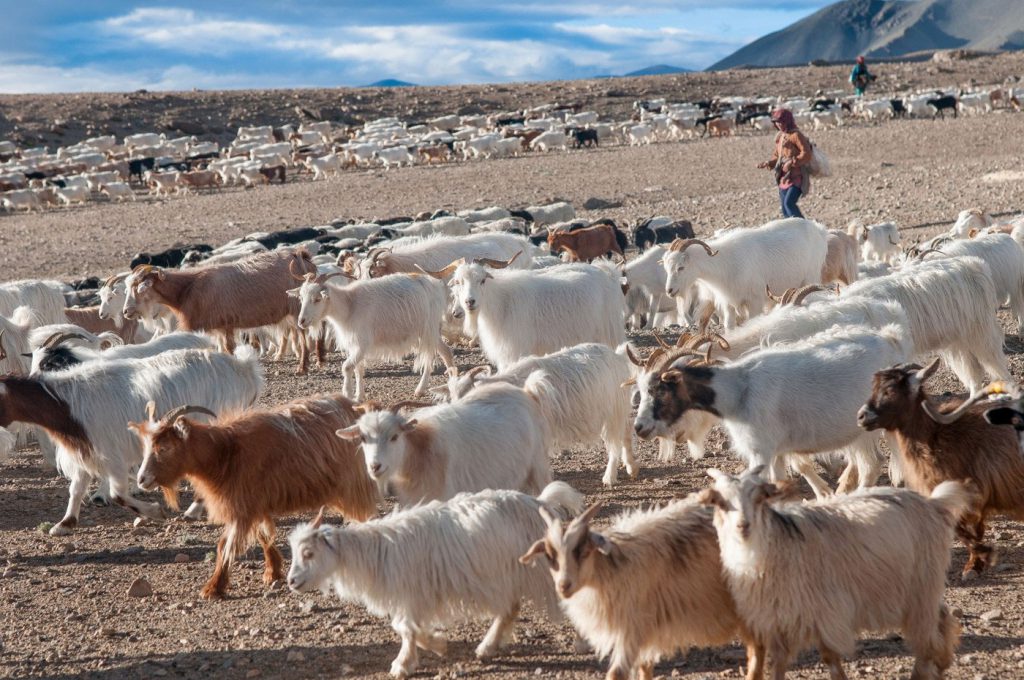
The Himalayan goat thrives in the remote and unforgiving terrains of the Himalayan mountains, spanning across regions such as Ladakh(India), Nepal, and Tibet. Herders painstakingly collect the wool from these goats during the molting season when they naturally shed their winter coats. This wool, referred to as "Cashmere fiber," is exceptionally fine, with fibers typically measuring between 12 to 15 microns in diameter – finer than human hair.
The Pashmina weaving tradition has deep roots in Kashmir, India. In India, artisans have practiced it for generations. In other words, the art of weaving Pashmina shawls and scarves has been passed down through families, and it plays a vital role in the local economy. The breathtaking beauty of Pashmina products is often a testament to the dedication and craftsmanship of the artisans who meticulously create them.
The Beauty of Pashmina
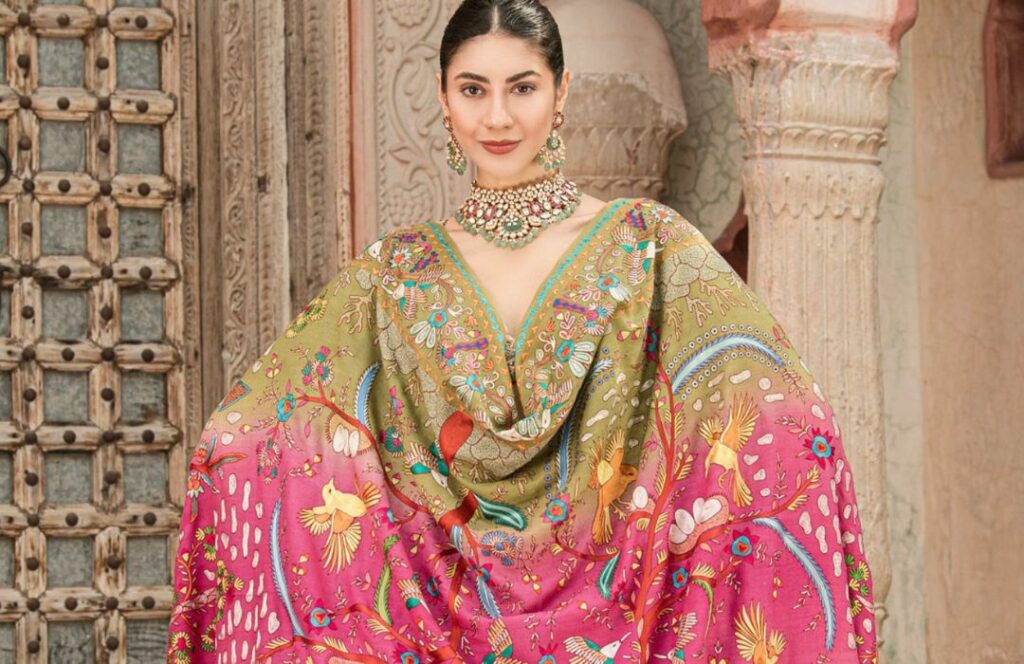
What sets Pashmina apart, besides its origin and meaning, is its unparalleled beauty and luxurious feel. The exceptional softness and warmth of Pashmina have captivated hearts and fashion enthusiasts for centuries. Here's a glimpse into its beauty:
Extraordinary Softness
Pashmina products, whether shawls, scarves, or blankets, exude a level of softness that is truly unparalleled. When you run your fingers over these products, you feel an immensely ethereal softness that gently caresses the skin.
Lightweight Warmth
Despite its finesse, Pashmina boasts remarkable insulating properties. It has the unique ability to provide exceptional warmth without the weight and bulk often associated with heavier winter fabrics. This makes it an ideal choice for staying cozy in colder weather while maintaining a sense of freedom and comfort.
Timeless Elegance
Pashmina products are inherently elegant. They drape beautifully and add a touch of sophistication to any outfit. Whether you're wearing a Pashmina shawl over a cocktail dress or wrapping a Pashmina scarf around your neck with casual attire, the result is an effortlessly chic look.
Versatility in Design
Pashmina products come in an array of designs, from intricate patterns to solid colors. This versatility allows them to complement a wide range of styles and occasions. Whether you're attending a formal event or going for a casual stroll, there's a piece to suit every mood and setting.
Cultural and Historical Significance
Pashmina shawls have deep cultural and historical significance, particularly in the regions where they come from. Leaders have exchanged these as gifts. They have been worn by royalty, and cherished as symbols of prestige and honor.
Artisanal Craftsmanship
The creation of Pashmina shawls and scarves involves labor-intensive and meticulous processes, from collecting the wool to spinning and weaving. Artisans, hence, perform each step with great care and skill and take immense pride in their craft
Origins and Ancient Beginnings of Pashmina
The origins and ancient beginnings of Pashmina weave a tale that dates back thousands of years, steeped in the rich heritage of the Himalayan region. This luxurious art form, renowned for its luxurious nature, has captivated hearts and wardrobes for centuries. To begin with, we must embark on a journey through time and culture.
The Himalayan Cradle
Pashmina finds its roots in the rugged and breathtaking landscapes of the Himalayas, spanning regions such as Ladakh(India), Nepal, and Tibet. In these remote and challenging terrains, a remarkable breed of goat known as the Changthangi or Cashmere goat has thrived for centuries. These goats adapted to harsh high-altitude climates, possess an extraordinary ability to produce wool that is incredibly soft and warm.
The Wool of Kings
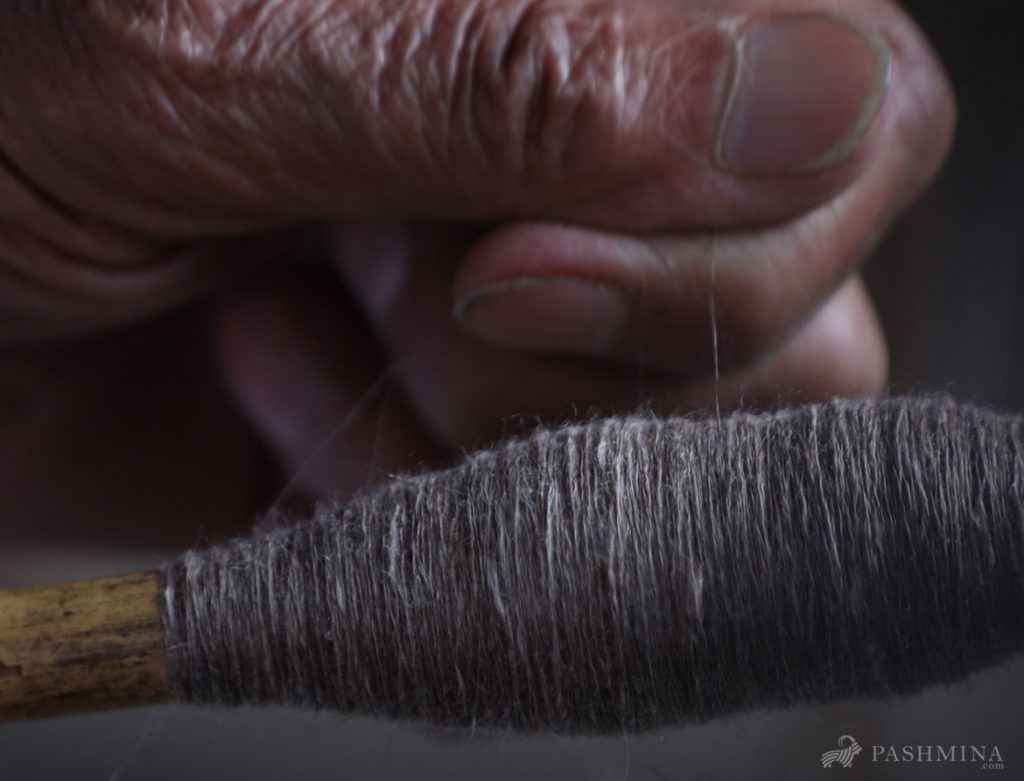
Cashmere wool, often referred to as "soft gold" or "the king of fibers," is the result of meticulous care and the Changthangi goat's unique adaptation to its environment. The goat's underbelly wool, or simply "Pashm," is the one that herders harvest during the molting season when goats naturally shed their winter coats. This wool, with fibers measuring between 12 to 15 microns in diameter (finer than human hair), forms the foundation of Pashmina textiles.
Ancient Beginnings
The ancient beginnings of Pashmina have deep roots in the cultures and traditions of the Himalayan region. Hence, we looked into some key aspects of its early history:
Early Use
Cashmere wool was initially used for its warmth and durability. In the harsh Himalayan winters, the soft, insulating properties of Cashmere were invaluable for keeping warm in the challenging environment.
Artisanal Craftsmanship
The art of weaving Pashmina textiles, particularly shawls and scarves, has been passed down through generations of skilled artisans. These craftsmen and women have honed their techniques over centuries, perfecting the art of creating exquisite products.
Cultural Significance
Pashmina shawls and scarves have deep cultural significance in the regions where they come from. Artisans have woven them into the fabric of daily life, used them as clothing, exchanged them as gifts, and even worn during religious and ceremonial occasions.
Royal Patronage
Pashmina found favor among royalty and aristocracy. The Mughal emperors of India, such as Akbar, Jahangir, and Shah Jahan, were notable patrons of these textiles. These shawls adorned the royal courts, becoming prized possessions and status symbols.
Trade Routes
Pashmina began to find its way into international trade through ancient trade routes, including the Silk Road. Consequently, it was traded across regions, reaching as far as Europe and becoming highly sought after for its luxurious qualities.
European Fascination
In the 18th and 19th centuries, Pashmina shawls captured the fascination of European aristocracy and fashion-conscious individuals. They became highly coveted items in Europe, particularly in France and England. Consequently, Napoleon Bonaparte's first wife, Empress Josephine, was famous for her collection of Pashmina shawls.
It, hence, is a textile that has long held a coveted place in the hearts of both royalty and aristocracy. Its extraordinary softness, warmth, and sheer elegance made it the textile of choice for emperors, kings, queens, and nobles across the world. To truly appreciate Pashmina's regal legacy, we, hence, delve into its journey through history and explore how it gained favor among some of the most influential figures in the world, including the Mughal emperors and European nobility.
Mughal Emperors and Pashmina: A Regal Bond
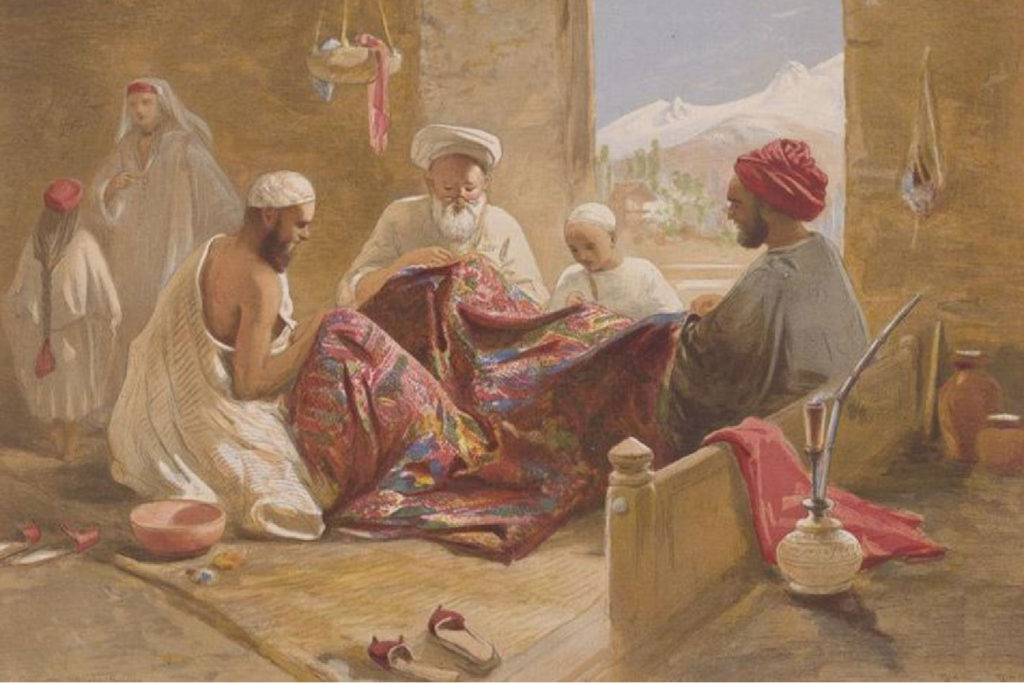
The Mughal Empire, which spanned the Indian subcontinent from the early 16th to the mid-18th century, was famous for its opulence, grandeur, and appreciation for the finer things in life. Pashmina, with its exquisite softness and unmatched warmth, therefore, found its way into the royal courts of the Mughal emperors.
1. Akbar the Great: The Mughal Emperor Akbar, known for his patronage of the arts and textiles, had a particular fondness for Pashmina shawls. He recognized their exceptional quality and began collecting them. Akbar's appreciation of this art contributed significantly to its prominence in the Mughal court.
2. Jahangir and Shah Jahan: Akbar's successors, Jahangir and Shah Jahan, continued his legacy of adorning their courts with Pashmina. These emperors were famous for their refined tastes and extravagant lifestyles, and Pashmina shawls became an integral part of their attire. The shawls were not only popular for their comfort but also for their aesthetic appeal.
3. The Influence on Art and Culture: Pashmina's association with the Mughal emperors extended beyond clothing. It also influenced art, with depictions of emperors and nobles wearing Pashmina shawls in Mughal paintings. Motifs and patterns related to this art were also incorporated into Mughal architecture, further cementing its significance in the culture of the empire.
European Nobility's Fascination with Pashmina
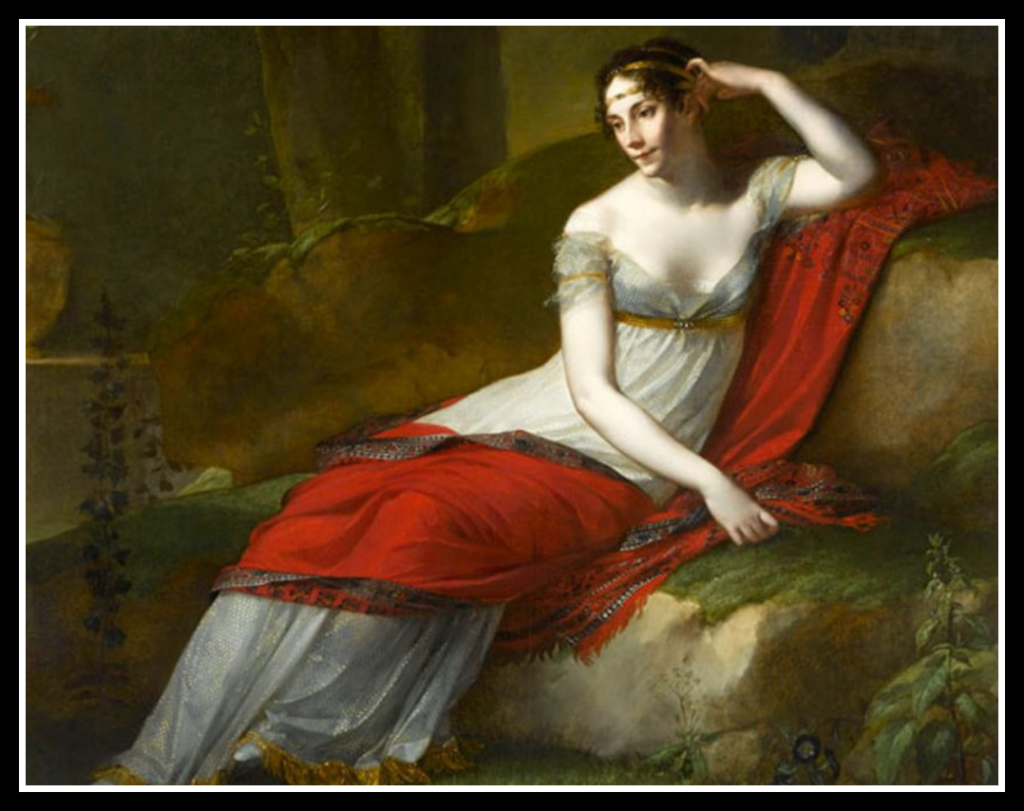
As trade routes expanded and global interactions increased, Pashmina shawls began to make their way to Europe, where they quickly captivated the hearts and wardrobes of European nobility.
1. French and English Aristocracy: In the 18th and 19th centuries, Pashmina shawls became a symbol of refinement and taste among European nobility. France, in particular, developed a deep fascination for this art, with French empresses and aristocrats proudly wearing them. Empress Joséphine, the first wife of Napoleon Bonaparte, was famous for her extensive collection of Pashmina shawls.
2. English Romantic Era: The English Romantic Era, characterized by its emphasis on nature, emotion, and the exotic, embraced Pashmina shawls. In fact, everyone considered them luxurious and a representation of the Orient. Additionally, the famous poet Lord Byron even mentioned these shawls in his writings.
3. A Symbol of Luxury and Status: Pashmina shawls were not only a fashion statement but also a status symbol. They were often passed down through generations as prized family heirlooms, symbolizing wealth, refinement, and heritage.
Trade Routes
Pashmina's journey beyond the Himalayas began along the ancient Silk Road, a network of interconnected trade routes that facilitated the exchange of goods, culture, and ideas between East and West.
1. Trans-Himalayan Trade: Cashmere wool was initially traded within the Himalayan region. It was transported along rugged mountain trails, often on the backs of sturdy pack animals, connecting regions like Kashmir, Nepal, and Tibet.
2. The Silk Road Connection: As the Silk Road expanded, so did the trade of Pashmina. Traders and caravans navigating these routes carried Pashmina textiles along with other valuable commodities. Hence, this facilitated its movement westward, making it accessible to a broader audience.
3. Persian Influence: The Persian Empire played a pivotal role in spreading Pashmina's popularity. Persian traders, who were well-versed in the intricacies of the Silk Road, introduced Pashmina to the Middle East and beyond. In fact, the Persian term "pashm" became synonymous with the fine wool of Pashmina.
The Role of Women in making of Pashmina
The Unsung Heroes: Women
The exquisite Pashmina shawls and scarves that adorn the world owe much of their beauty and craftsmanship to the skilled hands of women who have been an integral part of the Pashmina production process for centuries. These women, often unsung heroes, play vital roles in every step of creating this luxurious textile. From the initial collection of Cashmere wool to the intricate weaving of the final product, thus, all the intricate processes have women artisans as an integral part.
Collecting Wool:
The journey of Pashmina begins high in the Himalayan mountains, where the Changthangi goat roams. These goats produce the ultra-fine underbelly wool that is the heart of Pashmina. Collecting this precious wool is a delicate and labor-intensive process. And,it is predominantly carried out by women in the Himalayan regions of India, Nepal, and Tibet.
1. Herding and Grazing: Women are often responsible for herding and grazing the Cashmere goats, ensuring their well-being in the harsh mountain terrain. In fact, they have a deep understanding of the goats' needs and the seasonal shedding of their winter coats, making them central to the sustainability of the Pashmina industry.
2. Wool Collection: During the molting season, when the goats naturally shed their fine undercoat, women meticulously collect the Cashmere fiber. This involves gently combing and separating the soft down from the coarser outer hair. The precision and care with which this is done ensure the quality of the wool.
Spinning the Fiber:
Once the fiber is collected, it is transformed into yarn through the art of spinning by women. In other words, it is the women, who take on this crucial role, and skillfully spin the fine Cashmere down into delicate threads.
1. Hand Spinning: Traditionally, Pashmina is hand-spun, and women using hand spindle or charkha (spinning wheel) techniques. This hand-spinning process specifically allows for better control over the delicate fibers and ensures the yarn's uniformity.
Weaving Pashmina:
The final and most intricate step in creating Pashmina textiles is weaving. Hence, skilled artisans, often women, use traditional handloom techniques to craft exquisite shawls and scarves.
1. Artisanal Weaving: Women who are adept at the art of weaving bring Pashmina to life on the loom. They painstakingly create the intricate patterns and designs that make each piece a work of art. Their expertise ensures the precision and quality that define Pashmina products.
2. Passed-Down Traditions: The weaving of Pashmina is often a family tradition passed down through generations. Women, especially, play a central role in preserving these time-honored techniques and passing them on to future generations.
Empowering Communities:
Beyond their invaluable contributions to the art, women also play a significant role in sustaining their communities and preserving their way of life.
1. Economic Empowerment: Women's involvement in Pashmina production provides economic stability to their families and communities. Additionally, it empowers them by offering a source of income and financial independence.
2. Cultural Preservation: Women's participation in Pashmina production is instrumental in preserving the cultural heritage and traditions of the Himalayan regions. In fact, these traditions are intertwined into the fabric of their daily lives.
3. Education and Awareness: Women engaged in Pashmina production often actively participate in initiatives aimed at raising awareness about responsible and ethical wool sourcing. They are advocates for sustainable practices that benefit both their communities and the environment.
Cultural Significance of Pashmina:
Pashmina is not just an art form; it is an embodiment of tradition, history, and identity for the people of the Himalayan region. Here are some key aspects of its cultural significance:
1. Symbol of Heritage: Pashmina shawls and scarves are woven with patterns and motifs that have been passed down through generations. They often reflect the culture, beliefs, and history of the region. Furthermore, each Pashmina product is a testament to the artistry and craftsmanship of the artisans who create them.
2. Rituals and Ceremonies: Pashmina plays a central role in various rituals and ceremonies in the Himalayan region. Hence, it is used as a symbol of honor, respect, and hospitality. For example, Pashmina shawls are presented as gifts to guests and dignitaries during important occasions.
3. Identity and Pride: Pashmina is a source of pride for the communities involved in its production. It represents their unique heritage and skills. Therefore, wearing Pashmina is not just about fashion; it is a way for individuals to connect with their roots and express their identity.
Respecting Cultural Significance:
Respecting the cultural significance of Pashmina is not only a matter of cultural sensitivity but also an ethical imperative. Here's why it's crucial:
1. Cultural Preservation: When we honor the cultural significance of Pashmina, we contribute to the preservation of the traditions and heritage of the Himalayan communities. This helps ensure that their rich cultural practices are passed down to future generations.
2. Empowering Communities: Responsible consumption of Pashmina products can empower the communities involved in its production. In other words, supporting ethical practices and fair trade initiatives can improve the lives of artisans and their families.
3. Sustainability: Understanding the cultural value of Pashmina encourages us to advocate for sustainable and responsible practices in its production. This includes ethical sourcing of Cashmere wool and environmentally friendly methods.
Promoting Responsible Consumption:
Responsible consumption of Pashmina involves making informed choices that respect its cultural significance and the well-being of those who produce it. Here are ways to promote responsible consumption:
1. Education: Learn about the cultural significance of Pashmina and the communities that rely on its production. Moreover, understanding the value it holds helps consumers make more informed choices.
2. Ethical Sourcing: Support brands and retailers that prioritize ethical sourcing of Cashmere wool and fair compensation for artisans. Therefore, looking for certifications that verify sustainable and responsible practices.
3. Quality Over Quantity: Invest in high-quality Pashmina products that have a long life. Quality pieces not only have a longer lifespan but also contribute to sustainable consumption.
4. Preservation: Properly care for your Pashmina items to ensure they last for generations. This includes gentle cleaning, storage, and repair when needed.
5. Spread Awareness: Share the cultural significance of Pashmina with others. Additionally, encourage responsible consumption by promoting awareness of its heritage
The Illustrious past and present of Pashmina
Several museums around the world feature Pashmina shawls and textiles in their collections. Some of the notable museums where one may find these luxury shawls on display or in their textile collections include:
- The Victoria and Albert Museum (V&A), London, UK: The V&A houses an extensive collection of textiles, including Pashmina shawls, in its Asian and Islamic Art collections.
- The Metropolitan Museum of Art, New York, USA: The Met's Costume Institute and Islamic Art departments often feature Pashmina shawls and textiles as part of their exhibitions and collections.
- The National Museum, New Delhi, India: This museum showcases a rich collection of Indian textiles, including historic Pashmina shawls, highlighting their cultural significance.
- The Textile Museum, Washington D.C., USA: Known for its focus on textiles from around the world, this museum has featured Pashmina shawls in various exhibitions.
- The Cleveland Museum of Art, Ohio, USA: This museum's collection includes a range of textiles, and Pashmina shawls have been part of their exhibitions.
- The Museo del Tessuto, Prato, Italy: This museum specializes in textiles and fashion, and its collection includes a variety of textile artifacts, including Pashmina textiles.
Please note that museum collections are subject to change, and specific exhibitions or items on display may vary over time.
Also read: Pashmina – An Arrival of Sustainable Fashion
Conclusion
The remarkable history of Pashmina is a timeless narrative that weaves together the threads of tradition, luxury, and craftsmanship. From the remote Himalayan mountains to international runways, Pashmina has, hence, journeyed through centuries, leaving an indelible mark on the world of textiles and fashion.
Beyond its luxurious appeal, this art carries deep cultural significance, serving as a bridge between generations and cultures. It has become a source of pride for the communities that produce it, empowering artisans and sustaining their heritage.
As we reflect on the illustrious history of Pashmina, we are reminded of the enduring legacy of this remarkable textile. Its journey is a testament to the timeless beauty of craftsmanship, the importance of responsible consumption, and the power of culture to unite us all. Pashmina's story is far from over; it continues to evolve, enriching our lives with its elegance and warmth, just as it has for centuries.
Also read: Life of Pashmina goat herders